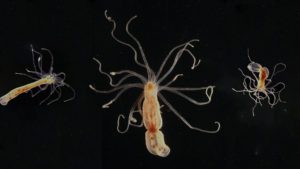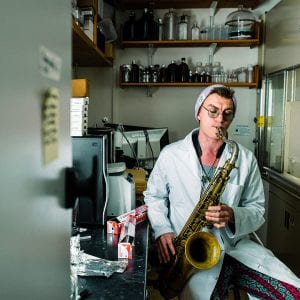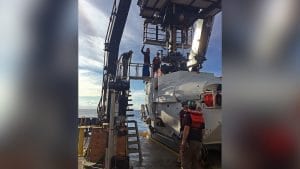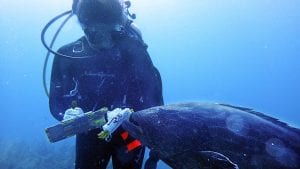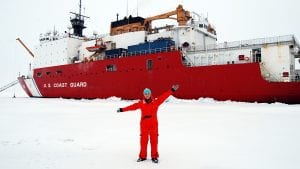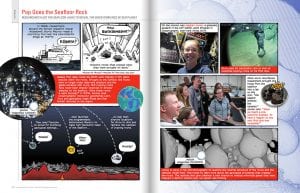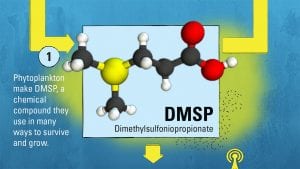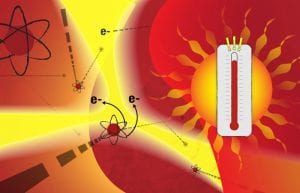Student Research
- Research
- Labs, Groups & Facilities
- Research Highlights
- Student Research
- Online Expeditions
- Postcards from the Bottom of the Earth
- Postcards from the Bottom of the Earth: November 22, 2001 (Part 1)
- Postcards from the Bottom of the Earth: November 22, 2001 (Part 2)
- Postcards from the Bottom of the Earth: November 27, 2001
- Postcards from the Bottom of the Earth: November 30, 2001
- Postcards from the Bottom of the Earth: December 2, 2001
- Postcards from the Bottom of the Earth
- People
- Events
Oceanus Magazine
Sunlight and the fate of oil at sea
Danielle Haas Freeman draws on the language of chemistry to solve an oil spill puzzle
A toxic double whammy for sea anemones
Exposure to both oil and sunlight can be harmful to sea anemones
A new ocean soundscape
Combining his passions for marine chemistry and music, an MIT-WHOI Joint Program student converts data into songs that reveal the chemical nuances of the ocean.
Journey to the Bottom of the Sea
My eyelids were tightly pressed down as I mustered all the tricks I could think of to get myself to sleep. I rolled around with no sign of getting close…
The Unseen World on Coral Reefs
We have learned that microbial communities on and within us—a microbiome—keep people healthy. Corals reefs also have their own microbiomes that they couldn’t function without.
A Change Has Come in the Arctic
On a long voyage across the Arctic Ocean, an MIT-WHOI graduate students finds chemical clues that climate change has already had impacts on the region.
Pop Goes the Seafloor Rock
WHOI scientists used the human-occupied submersible Alvin and the autonomous underwater vehicle Sentry to explore a surprising discovery: gas-filled volcanic rocks on the seafloor that “pop” when brought up to the surface.
Minerals Made by Microbes
Some minerals actually don’t form without a little help from microscopic organisms, using chemical processes that scientists are only beginning to reveal.
A Mighty Mysterious Molecule
What gives sea air its distinctive scent? A chemical compound called dimethylsulfide. In a new study, WHOI scientists show that the compound may also be used by marine microbes to communicate with one another.
Specks in the Spectrometer
Mass spectrometer facilities can be a rite of passage for scientists—as well as for the samples analyzed inside the mass specs.


